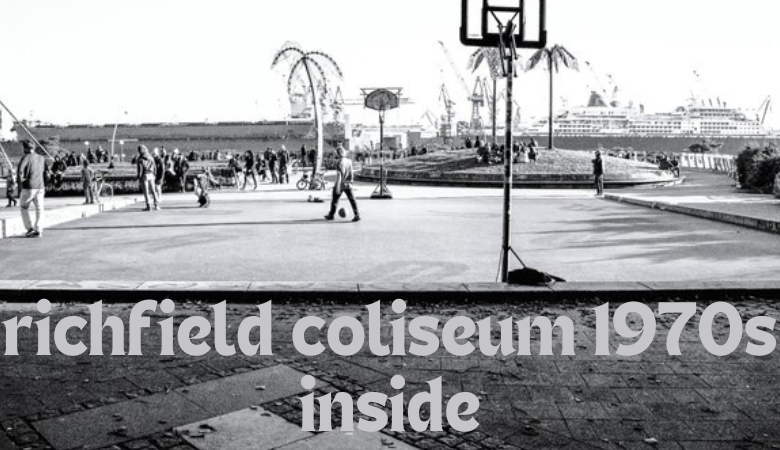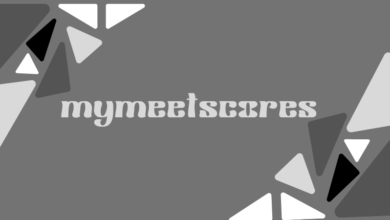The soul of the richfield coliseum 1970s inside

In the heart of Northeast Ohio, nestled amid the rolling farmlands and quiet suburbs, there once stood a giant, a colossus of concrete and steel that breathed life into a sleepy town. The Richfield Coliseum, a structure that seemed almost mythical in its scale and presence, rose in 1974 like a cathedral dedicated to the gods of sports and music. Its halls echoed with the cheers of the crowd, the thundering beats of rock ‘n’ roll, and the quiet murmur of countless whispered memories.
The richfield coliseum 1970s inside were a time of change, of cultural upheaval, and nowhere was this more evident than within the hallowed walls of the Richfield Coliseum. This was more than just a building; it was a living, breathing entity, a sanctuary where dreams were realized and hearts were broken. Step inside, if you will, and let the spirit of the ’70s guide you through its storied halls.
The Grand Entrance: Stepping Into a New World
The Gateway to Memories
As you approach the Coliseum, the first thing that strikes you is its sheer size. The building looms large against the sky, its brutalist architecture a stark contrast to the rural landscape that surrounds it. The entrance is grand, almost intimidating, with massive doors that seem to promise both excitement and mystery. Stepping through these doors is like crossing a threshold into another world—a world where the outside ceases to exist and only the present moment matters.
The Hallways of Anticipation
Once inside, the hallways stretch out like arteries, pulsing with the energy of the crowd. The walls, adorned with posters of past events, tell stories of nights filled with glory and disappointment. The scent of popcorn and beer hangs in the air, mingling with the excitement and anticipation that seems to electrify the very atmosphere. Every step echoes with the sounds of footsteps that came before, a reminder that you are walking in the footsteps of legends.
The Arena: A Stage for Heroes and Legends
The Court of Dreams
As you enter the main arena, the vastness of the space takes your breath away. The seats rise steeply around you, encircling the court like a coliseum from ancient Rome. The hardwood floor gleams under the bright lights, a stage set for the drama of sports to unfold. This is where the Cleveland Cavaliers made their home, where every dribble of the ball, every swoosh of the net, was accompanied by the collective gasp or cheer of thousands of fans.
The Roar of the Crowd
In the richfield coliseum 1970s inside, the Coliseum was the epicenter of basketball in Ohio. The roar of the crowd was deafening, a tidal wave of sound that crashed over you and left you breathless. Each game was a battle, each victory a triumph that echoed through the rafters. The players were more than athletes; they were gladiators, warriors who fought for every point, every inch of the court.
The Silent Aftermath
Richfield coliseum 1970s inside final buzzer, when the crowd had dispersed and the lights had dimmed, the arena took on a different character. The silence was almost tangible, a heavy presence that settled over the empty seats and the scuffed floor. It was in these quiet moments that the Coliseum seemed most alive, as if the building itself was catching its breath, reliving the events that had just unfolded.
The Concert Hall: Where Music Came to Life
The Stage That Rocked the World
The richfield coliseum 1970s inside was not just a sports venue; it was a sacred space for music, a place where the biggest names in rock ‘n’ roll came to play. The stage, bathed in colored lights, was a portal to another dimension, a place where the mundane realities of life faded away, leaving only the music and the moment.
The Sound of Freedom
In the 1970s, music was more than just entertainment; it was a movement, a voice for a generation that sought to break free from the constraints of the past. The Coliseum’s acoustics were legendary, amplifying every note, every chord, until it resonated deep within your soul. Whether it was the Rolling Stones, Led Zeppelin, or Pink Floyd, the music was a force of nature, a wave that swept over the audience and carried them to new heights.
The Lights and the Magic
The light shows at the richfield coliseum 1970s inside were nothing short of magical. The beams of light danced across the arena, casting shadows that seemed to move to the rhythm of the music. The crowd, bathed in the glow, became a part of the performance, their cheers and applause merging with the music to create a symphony of sound and light.
The People: A Diverse Tapestry
The Fans and Their Passion
The true heart of the Richfield Coliseum was not its architecture or its events, but its people. The fans who flocked to its doors, week after week, were a diverse tapestry of humanity, united by their love of sports and music. Each person who entered the Coliseum brought with them their own hopes, dreams, and stories, all of which became woven into the fabric of the building’s history.
The Vendors and the Smiles
The vendors, with their trays of snacks and drinks, were as much a part of the experience as the events themselves. Their calls echoed through the halls, offering hot dogs, popcorn, and ice-cold beer to the hungry and the thirsty. These men and women, with their easy smiles and quick banter, added a human touch to the grandeur of the Coliseum, reminding everyone that, at its core, this was a place for people.
The Quiet Moments
Not every moment at the Coliseum was filled with noise and excitement. There were quiet moments, too, moments when you could almost feel the weight of history pressing down on you. Whether it was a lone fan sitting in the upper seats, lost in thought, or a janitor sweeping the floor long after the crowds had gone, these moments were a reminder that the Coliseum was a place where life happened, in all its messy, beautiful complexity.
The Legacy: Fading Into Memory
The Final Curtain
As the 1970s drew to a close, so too did the golden age of the Richfield Coliseum. The building, once so full of life, began to show signs of wear and tear. The crowds grew smaller, the events less frequent, and the echoes of the past began to fade. But even as the Coliseum’s days were numbered, its legacy lived on, etched into the memories of those who had experienced its magic.
The Demolition and the Aftermath
In 1999, the Richfield Coliseum was demolished, its remains buried beneath the earth, where nature would soon reclaim the land. But the spirit of the Coliseum, the memories of those who had passed through its doors, could not be so easily erased. The site where it once stood is now a field, but if you listen closely, you can still hear the echoes of the past—the cheers, the music, the life that once filled this space.
A Legacy in Our Hearts
The Richfield Coliseum may be gone, but it is not forgotten. Its legacy lives on in the hearts of those who remember it, in the stories that are told and retold, passed down through generations. It was more than just a building; it was a symbol of a time, a place where dreams were made and lost, where life was lived to the fullest.
Conclusion: The Coliseum Lives On
Though the Richfield Coliseum no longer stands, its spirit endures. It lives on in the memories of those who were there, who felt the energy of the crowd, who heard the music, who experienced the magic. The 1970s were a time of change, of growth, of exploration, and the Richfield Coliseum was at the heart of it all. It was a place where anything was possible, where the ordinary became extraordinary, and where every moment was a story waiting to be told.
FAQs
What events took place at the Richfield Coliseum?
The Richfield Coliseum hosted a wide range of events, from Cleveland Cavaliers basketball games to concerts by legendary rock bands like Led Zeppelin and Pink Floyd. It was also the venue for numerous other sports events, including hockey and boxing, as well as political rallies and conventions.
Why was the Richfield Coliseum demolished?
The Coliseum was demolished in 1999 due to its declining use and the construction of more modern facilities like the Gund Arena (now Rocket Mortgage FieldHouse) in downtown Cleveland. The land where it once stood has since been reclaimed by nature.
What made the Richfield Coliseum special?
The Richfield Coliseum was known for its unique combination of size, acoustics, and location. Its remote setting gave it a certain mystique, while its acoustics made it a favorite venue for concerts



